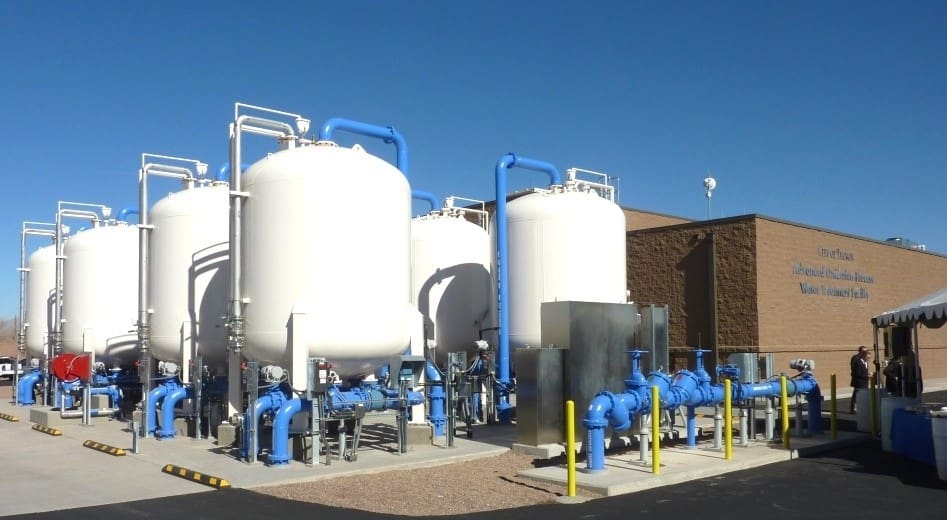Innovative PFAS Therapy Solutions for Safer Water
The raising frequency of PFAS contamination in water supplies requires a crucial assessment of cutting-edge therapy solutions. Additionally, emerging bioremediation methods supply an even more lasting approach to tackling PFAS difficulties. pfas management.
Introduction of PFAS Contamination
PFAS contamination has actually become a considerable ecological and public wellness problem. Per- and polyfluoroalkyl materials (PFAS) are a group of artificial chemicals known for their persistence in the environment and human body, leading them to be generally described as "for life chemicals." These substances have actually been widely used in different sectors, consisting of firefighting foams, water-repellent materials, and food packaging, mainly because of their water- and grease-resistant homes.
The extensive usage of PFAS has actually caused their discovery in dirt, water materials, and even in the blood of humans and animals. Studies have actually connected PFAS direct exposure to many health and wellness problems, consisting of developmental impacts in infants, immune system dysfunction, and numerous kinds of cancer cells. Furthermore, the environmental persistence of these compounds complicates their destruction and elimination, increasing worries about lasting environmental effects.
Governing bodies are significantly applying rigorous guidelines to keep track of and reduce PFAS degrees in drinking water and various other environmental mediums. As awareness of PFAS contamination expands, it has become crucial for communities and sectors to seek reliable treatment solutions to alleviate exposure and guard public health and wellness.
Advanced Filtration Technologies
As the seriousness to address PFAS contamination escalates, advanced purification innovations have actually arised as a pivotal part in the remediation initiatives targeted at eliminating these persistent chemicals from water resources. These technologies utilize innovative mechanisms to successfully target and capture PFAS compounds, which are infamously resistant to traditional therapy methods.
One of one of the most appealing strategies is the use of granular triggered carbon (GAC), which adsorbs PFAS particles due to its high surface and permeable framework. This method has been commonly applied in both municipal and industrial setups, showing significant reductions in PFAS focus. In addition, ion exchange materials have actually obtained traction, particularly designed to precisely bind PFAS ions from water, thus facilitating their removal.
Membrane filtering modern technologies, such as reverse osmosis and nanofiltration, also show efficiency in PFAS removal by literally separating pollutants from water - pfas management. These systems can accomplish high degrees of pureness, making them ideal for alcohol consumption water applications
Chemical Therapy Innovations
Various chemical treatment developments are being checked out to efficiently attend to PFAS contamination in water materials. One appealing technique includes using innovative oxidation procedures (AOPs), which use effective oxidants such as ozone, hydrogen peroxide, or chlorine dioxide incorporated with UV light to damage down PFAS substances right into much less harmful substances. This approach has demonstrated effectiveness in lab settings, showing potential for scalability in real-world applications.
Another cutting-edge approach is the growth of ion-exchange materials particularly designed to target PFAS. These materials official statement can precisely adsorb PFAS compounds from water, enabling for their removal throughout treatment processes. Current innovations have improved the performance and ability of these resins, making them a beneficial option for water therapy facilities.
Additionally, scientists are examining using chemical representatives like persulfate and ferrous ions to boost the deterioration of PFAS in contaminated water. These representatives can cause chain reaction that help with the failure of consistent PFAS compounds.
Arising Bioremediation Strategies
Recent improvements in chemical treatment technologies have led the way for discovering bioremediation methods as a practical choice for addressing PFAS contamination. Bioremediation harnesses the all-natural metabolic processes of microbes to deteriorate or change pollutants, making it an attractive strategy for dealing with relentless pollutants like PFAS.
Emerging methods in bioremediation consist of making use of genetically crafted microbes that can particularly target and damage down PFAS compounds. These microbial stress are being created for their enhanced destruction capabilities, boosting the performance of the remediation process. Furthermore, scientists are exploring the capacity of plant-assisted bioremediation, where specific plant varieties may uptake and withdraw PFAS from contaminated dirt and water.
An additional promising method is the application of bioaugmentation, which includes presenting advantageous bacteria right into infected settings to boost the deterioration find this of PFAS. This technique can promote faster remediation timelines and enhance total performance.

Regulative Structures and Requirements
A comprehensive regulatory framework is vital for successfully taking care of PFAS contamination and making certain public wellness protection. The increasing acknowledgment of per- and polyfluoroalkyl compounds (PFAS) as toxic wastes has triggered different federal and state agencies to develop visit this web-site standards that control their presence in water supplies. The U.S. Environmental Protection Firm (EPA) has actually developed health and wellness advisories and is functioning toward setting enforceable limits for PFAS in drinking water.
State-level laws vary considerably, with some states adopting stricter standards than those suggested by the EPA. These policies typically include maximum impurity degrees (MCLs) for particular PFAS compounds, surveillance demands, and reporting obligations for water utilities. Additionally, arising frameworks focus on the removal of infected sites, emphasizing the demand for efficient treatment modern technologies.

Final Thought
Finally, the growth and implementation of innovative PFAS therapy options are important for addressing the prevalent concern of water contamination. Advanced filtering technologies, chemical treatments, and emerging bioremediation strategies jointly provide a multifaceted approach to properly decrease and degrade PFAS degrees. As regulatory structures remain to evolve, incorporating these technologies will be necessary to secure public health and recover the stability of infected water sources, inevitably contributing to a cleaner and more secure atmosphere.